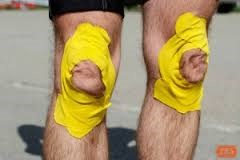Riders come for bike fits at Physiohaus for various reasons. Some may want to optimise their position from a performance standpoint. Others may be suffering some pain or discomfort and yet others are somewhere in between. That is, they simply enjoying riding and want to make sure it is correctly set up for them or even if their bike is correct for them in some instances.
For the purpose of this article, I wanted to focus on those of you riding with pain and what you could potentially do about it, or try from a positional point of view or with you yourself.

Whenever we go through a fit protocol with someone, part of the reasoning process will be based on establishing if discomfort is caused by the bike set up, which in theory is a relatively easy fix, by us correctly working out how the rider moves on the bike and setting up accordingly.
More complicated from a management point of view, is if discomfort is caused by an issue with the rider. Fortunately, all the fitters at Physiohaus are physio’s as well as experienced bike fitters which allows us to address both potential aspects. Some will be a combination of both.
In the wise words of my esteemed physio colleague at British Cycling, Phil Burt has coined the phrase of ‘microadjusters’ and ‘macroabsorbers’.
The human body is an adaptable functioning unit – some are sensitive to mm adjustments; others can absorb big changes. They will in effect behave like a chameleon and adapt to changes. These are the riders which are generally easier to fit. The ‘microadjusters’ are sometimes harder as they do not always go with adjustments, e.g. we may move a saddle rearward but the rider may subconsciously sit forwards on the saddle without realising it.
In terms of prevalence of areas of pain, riders complain more generally of low back pain and issues related to saddles as a contact point than knee pain or neck/shoulders and hand discomfort.
Low back pain (LBP) can be exacerbated by a saddle that is too high (causing the hips to rock side to side) or too low which often makes a rider posteriorly rotate their pelvis causing excessive flexion (curvative in the lower back).

To (roughly) set your own saddle height you should be able to reach the pedal with the heel of your shoe without your pelvis rocking to one side, and potentially pedal backward maintaining contact with the pedal. Therefore, when you clip into the pedal you should have a slight bend in the knee. However, this does not take into account variability of foot size or cleat settings.
(To point out this image is slightly inaccurate, generally we like to see the ankle open up slilghtly through the bottom of the pedal stroke.)

Try to record saddle height as measured from the bottom bracket through the centre top of the saddle. It always amazes me the number of cyclists who do not roughly know this measurement.
Once saddle height is established (and cleats are hopefully set up symmetrically), the reach and drop to the bars and more specifically the hoods can be considered.
You should be able to ride with a slight relaxed bend at the elbow. A good rule of thumb is when you look down at the front of the bike the wheel axel should be hidden by/obscured by the handlebar.
Adjusting the bar by changing stem length may be necessary. Sometimes it is counterintuitive that lengthening rather than shortening a stem can help to take weight off your hands and relax shoulders and upper back.

Like anything else, these suggestions are guidelines only and do not replace a full professional assessment of your position.



